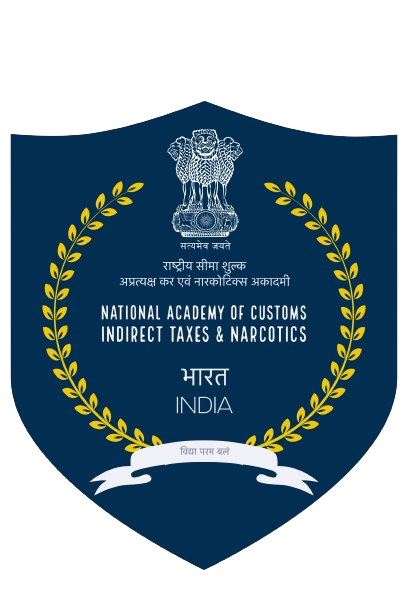|
|
- Home
- Public Policy & International trade And Audit & Accountancy
Public Policy & International trade And Audit & Accountancy
Pubic Policy
- Prudent Financial Decision Making for Public Policy Makers
- Impact of Macro Policies in Planning & Budgeting
- Government Accounting to India: Recent Trends
- Overview of Budgeting Processes and Fiscal Responsibility Legislation
- Shades in Budgeting
- (Performance Budgeting, Outcome Budgeting, Gender Budgeting, and Zero based budgeting)
- Public Procurement: The Legal Procedural and Regulatory Framework
- Introduction to Social Cost Benefits Analysis
- Leveraging from Public Private Partnership Introductory issues
- Data Analysis for Public Policy Makers
- Public Financial Management System: Introduction and Impact
International Trade - Basic principles and practical aspects
- Why countries trade– absolute advantage and comparative advantage
- Trade policy tools– tariffs and non-tariffs
- How countries use trade measures: some examples
- Types of trade arrangements- bilateral, regional and multilateral
- Trade Finance and Letter of Credit
International Trade and India
- India’s international trade- trends of imports and exports
- Where India stands in global trade and significance of trade policy for India
- India’s bilateral and regional trade arrangements, and role of customs
- World Customs Organization (WCO)
- Overview of WCO
- International Customs Conventions and other conventions
- HS Convention
- ATA Convention
- Revised Kyoto Convention
- Mutual Administrative Assistance on Customs matters
- Nairobi Convention
- Johannesburg Convention
- Important MAA arrangements of India
Other Conventions relevant for Customs & Border Protection:
- Basel Convention
- SCOMET
- CITES
- Cartagena Convention
- Rotterdam Convention
- Montreal Protocol
- OPCW
- Stockholm Convention
21st Century Customs
- Paperless Customs
- Single Window
- Big Data
- E-commerce
- NTC (National Targeting Centre)
- APIS (Advance Passenger Information System)
Multilateral Trade- the World Trade Organization (WTO)
- WTO- basic principles and structure
- GATT and Schedule of Concession
WTO agreements relevant for customs:
- Antidumping
- Safeguards
- Customs Valuation
- Rules of Origin
- Information Technology
- Import Licensing
- Trade Facilitation
- Customs role in multilateral trading system
- Dispute settlement mechanism of WTO
- WTO Trade Disputes- Case Studies:
- EC – IT products: Case of set-top boxes (DS375)
- EC – Customs Classification of Frozen Boneless Chicken Cuts (DS269)
WTO Agreement on TFA
- TF Negotiations
- Structure and provisions of TFA
- Current International Developments
- India’s Preparedness
Role of Customs in Implementing TFA
Audit & Accountancy :
- Financial Accounting - Basics
- Introduction to Financial Accounting, Accounting Principles, Concepts and Conventions, Double entry systems of book keeping, Accounting terms & Accounting Equations. Classification of Accounts - Personal Account, Real Account, Nominal Account, Capital and Revenue, Expenditure.
- Journal – Steps for journalisation, Rules of Debit/ Credit; Practical exercises
- Subsidiary Books, Cash Book, Sales Book, Purchase Book, Sales Returns Book, Purchase Return Book, Bills Receivable/Payable Books. Ledger
- Format of Ledger, Arrangement of Accounting in Ledger, Sub Division of Ledger, Steps in posting, Balancing of Account, Study of Debit notes, Credit notes; Practical exercises
- Trial Balance – Concepts, Preparation of Trail Balance, Suspense Account; Accounting treatment of CENVAT credit on inputs services and capital goods; Payment of duty demand through CENVAT credit; CENVAT duty on finished goods, removal of inputs/capital goods and its treatment
- Profit & Loss Account; Adjustment of Entries , Other Income, Depreciation, Treatment of Losses, Preparation of Trading/Manufacturing P&L Account
- Balance sheet – Assets & Liabilities, preparation of Balance Sheet - Statutory Auditor’s Report - Internal Auditor Report
- Audit by Comptroller and Auditor General Income Tax Audit/Form3CD.
- Sales Tax/VAT Audit - Cost Audit Report - Companies( Auditor’s Report )
- INTRODUCTION TO COST ACCOUNTING. VARIOUS COSTS. IMPORTANCE OF CAS 4. PREPARATION OF CAS4; Practical exercises
- Analysis of Balance Sheet- Practical reading of Balance Sheet of Large Corporate Companies with a purpose to scrutinize compliance to Tax Laws
- Study of Financial Records from Audit Perspective - Trial Balance, Debit Note, Credit Note, P&L Account, Balance Sheet, Notes to Account, Auditors Report & Directors Report
- Departmental- Audit - Provisions, Procedures and Audit Tools
- Introduction to Microsoft Excel, Basic Functionalities of Excel
- Using Functions
- Getting External Data
- Analyzing data and Exporting in various formats
- Introduction to Tally - Familiarizing Tally ERP 9
- Master Creation - Transactions Entry - Tax Accounting – Vouchers
- Returns, Annexures, Registers, Balance Sheet, Profit & Loss Account
- Data Export, exception Reports - Journal Entries, Debit Notes / Credit Notes, BS / P&L , registers, Stock summary, Receipt and Payment Vouchers
- Miscellaneous - searching / Opening Data, Backup / Restore , Password policy , Data Migration
- CAAP INTRODUCTION
- AUDIT MODALITIES CONCEPTS OF BUSINESS SYSTEM FILE STRUCTURES
- MANAGEMENT FIELD TYPES IMPORT IDEA - DBASE -EXCEL STANDARD FORMATS -PRINT REPORT - SINGLE LINE EQUATION EDITOR
- CAA PARAMETERS AND DATA TRANSFER - PERFORM CAATS - FEASIBILITY STUDY - SORTING & INDEXING
- SUMMARISATION , JOINING & APPENDING OF DATABASES
- EXPORTING, GAP DETECTION & DUPLICATE KEY DETECTION
- POST TRANSFER CARE, BACK UP OF DATA, FILE DOCUMENTATION
- SAP ERP-Financials
- Legal provisions governing Audit – under Customs, Central Excise, Service Tax & GST including Rules thereof; Overview of Audit Procedure; Risk Parameters/ National/Local Risk Parameters - Score based selection of units for Audit.
- GST returns ( with special emphasis on GSTR 9) and its implication in Audit
- Audit in Central Excise and Service Tax ( Including EOU) - Steps involved; Desk Review, Interview of key personnel, Tour of the Factory Premises, Review of Internal Control, Walk through.
- Preparation of Audit plan, Verification, Working Papers Preparation of Draft Audit Report; Monitoring Committee Meetings, Final Audit Report, Audit Follow up, Quality Assurance
- On Site Post Clearance Audit in Customs and Post Clearance Audit in Customs – OSPCA and PCA Regulations/Guidelines; Important Areas to be covered – Classification/ Valuation/ Exemption/ Country of Origin etc.
|

